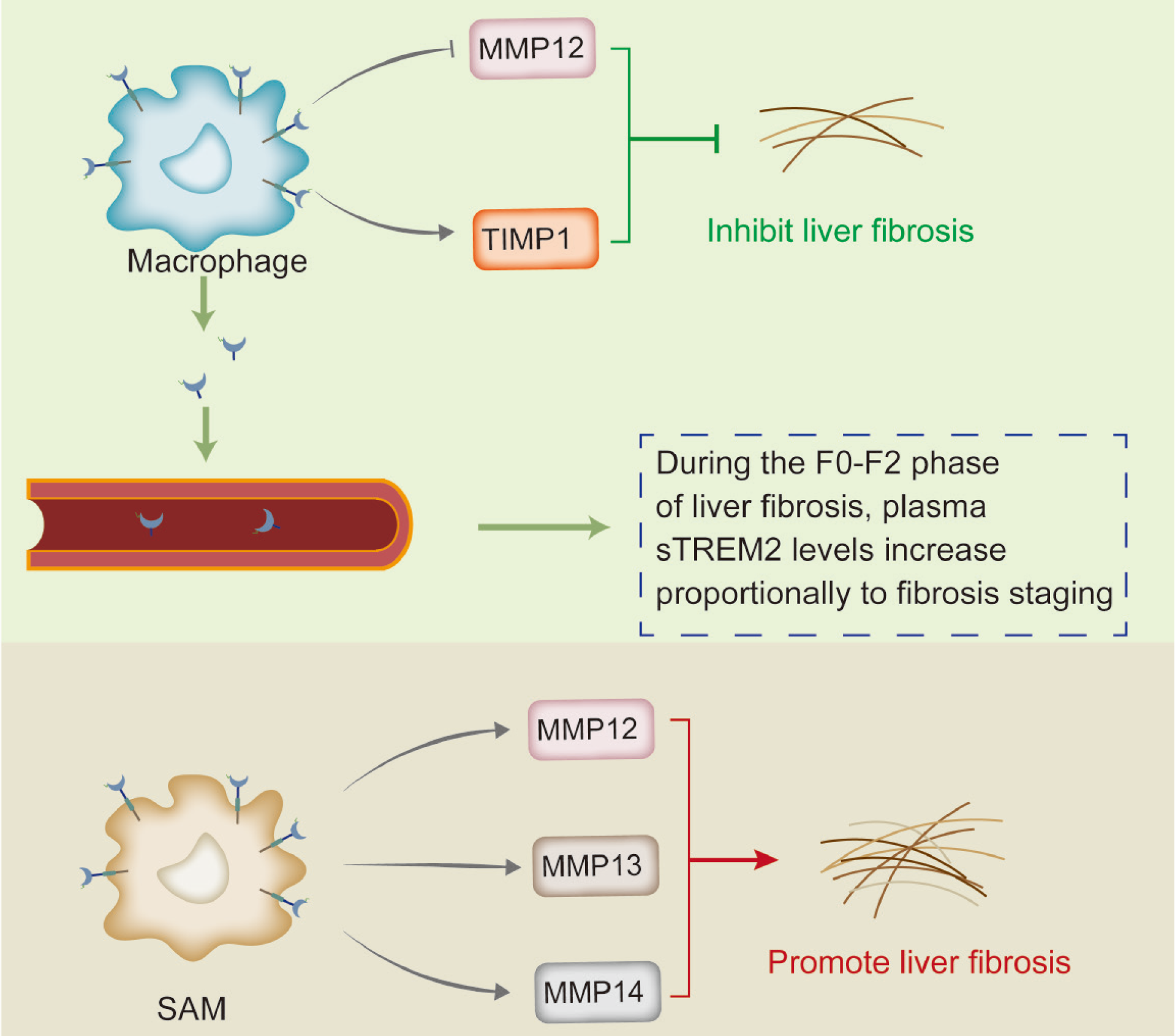Copyright
©The Author(s) 2025.
World J Hepatol. Feb 27, 2025; 17(2): 102328
Published online Feb 27, 2025. doi: 10.4254/wjh.v17.i2.102328
Published online Feb 27, 2025. doi: 10.4254/wjh.v17.i2.102328
Figure 4 Bidirectional regulation of triggering receptor expressed on myeloid cells 2 in non-alcoholic fatty liver disease-related liver fibrosis.
Triggering receptor expressed on myeloid cells 2 (TREM2) can promote the reduction of mitochondrial membrane potential (MMP) 12 and increase the expression of tissue inhibitors of metalloproteinase 1, thereby exerting an anti-fibrotic effect. The level of plasma soluble TREM2 can be used as a biomarker to monitor the progression of liver fibrosis in non-alcoholic fatty liver disease. Conversely, studies have shown that CD9+TREM2+ non-alcoholic steatohepatitis-associated macrophages or scar-associated macrophages accumulate in the liver and promote liver fibrosis by enhancing the expression of MMP12, MMP13, and MMP14. MMP: Mitochondrial membrane potential; SAM: S-adenosyl methionine; STREM2: Soluble triggering receptor expressed on myeloid cells 2; TIMP1: Tissue inhibitors of metalloproteinase 1.
- Citation: Zhang LH, Liu ST, Zhao Q, Liu XY, Liu T, Zhang Q, Liu MH, Zhao WX. Role of triggering receptor expressed on myeloid cells 2 in the pathogenesis of non-alcoholic fatty liver disease. World J Hepatol 2025; 17(2): 102328
- URL: https://www.wjgnet.com/1948-5182/full/v17/i2/102328.htm
- DOI: https://dx.doi.org/10.4254/wjh.v17.i2.102328









